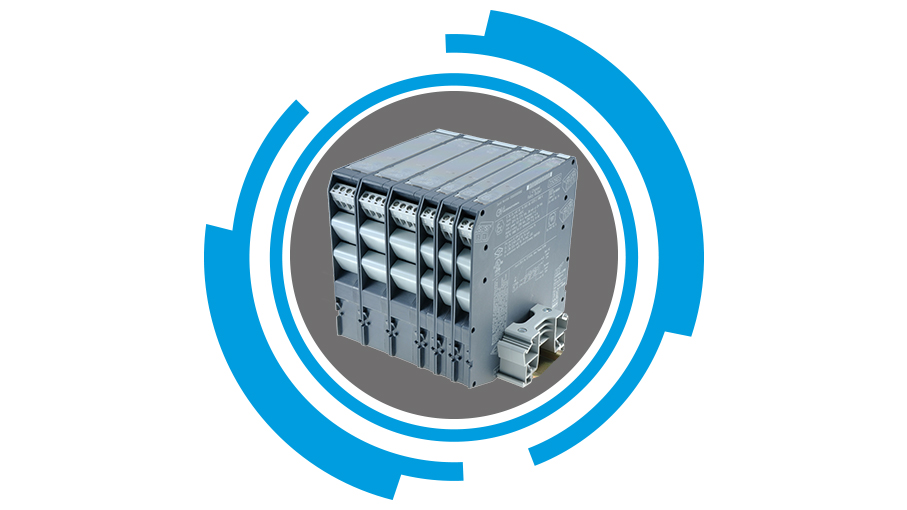Is it possible to protect an industrial process at the level of field data acquisition? Yes, if galvanic isolation techniques are used.
With galvanic isolation, it is possible to eliminate the main forms of interference and the risk of electrical circuit failure when the signal from a sensor is received by the control unit, both in hazardous and non-hazardous areas. Galvanic isolation (named after the Italian physicist Luigi Galvani) is one of the most important techniques of signal conditioning and is both cost effective and easy to implement. It is a technique that aims to resolve issues in implementing a common interface between sensors and control units when the output signals from the sensors differ, whether in their nature (e.g. current, voltage, resistance, etc.), level, or type (e.g. direct, alternating, or impulse current). More specifically, galvanic isolation makes it possible for the signal to flow from the source to the measuring device by way of transformers, opto-isolators, or capacitors.
Galvanic isolation also makes it possible to isolate a low-voltage circuit from the electrical grid (including between two or more circuits in which there is no direct conduction path) and to isolate the power from the control unit, thereby preventing peaks of high voltage and the common-mode high voltage that could destroy the electronic circuits, thereby protecting both users and the measurement and control devices. Isolators make it possible to eliminate the noise induced by the common points of circuits of different potential, while isolating measurement from signal processing.
Galvanic isolation and ground connections
Galvanic isolation is also indispensable in eliminating ground loops caused by common grounds. In an instrumentation measuring circuit, a single ground connection does not generally cause any issues, but things get more complicated when there are multiple ground connections.
Each loop is tied to a different potential. This difference in potential creates current flows between the ground references that are added to the signals. The use of a galvanic isolator eliminates this sort of noise, decouples the measuring circuits, and maintains device and system integrity. It should be noted that by common “grounds” we mean reference nodes at which the voltages of the other nodes of a circuit are measured.
In installations, these nodes are normally grounded for safety reasons and so as not to allow them to fluctuate the voltage, i.e. to anchor the voltage to the ground. Without a ground connection, the node potential can reach dangerously high values (i.e. hundreds of volts). In a data-acquisition system related to an industrial process, it is normal to find a field ground (at the sensors and actuators) and a ground at the acquisition circuits.
Both of these nodes are grounded locally, but the ground is not an equipotential surface, and the ground connections can be partially in common with high levels of extraneous currents. Therefore, you get a connection between the nodes by way of the ground connections, while the ground nodes are typically at a different potential. This is why the use of galvanic isolation is an essential safety practice that is both easy to implement and provides a high level of return on investment.
It is important to note that galvanic isolators are generally multifunctional devices that, in addition to isolating sensor circuits, also provide signal conditioning functions such as (passive or active) anti-aliasing, amplification, attenuation, impedance matching, measurement normalization (in current, voltage, resistance, or frequency), excitation with measurements by resistance thermometer, thermocouple, thermistor, extensometer, accelerometer, etc. Isolators can be located in electrical control boxes, in sensors, actuators and controllers, integrated in A/D conversion boards or fieldbuses, and in multiplexing systems.
The GMI product range
G.M. International has a catalogue of dozens of models of galvanic isolators that comply with IEC 61508 and IEC 61511 standards in both intrinsic safety (IS) versions for SIL2 applications (Series D1000 and D5000) and in non-IS versions for SIL3 applications (Series D6000). Our D1000, D5000 and D6000 isolators ensure high levels of accuracy and repeatability in signal transfer. They are also designed with advanced circuitry that ensures low levels of heat dissipation, thereby ensuring that the modules remain cool despite their high density and functionality. Surface-mount technology (SMT) maximizes the life and reliability of our devices. The complete lack of electrolytic capacitors extends the useful life of our modules to up to 20 years.


